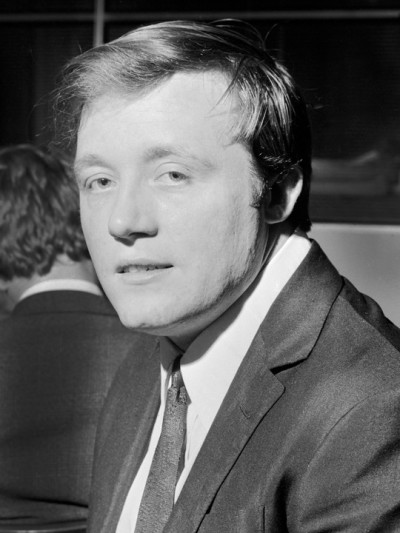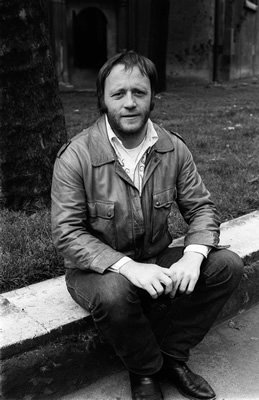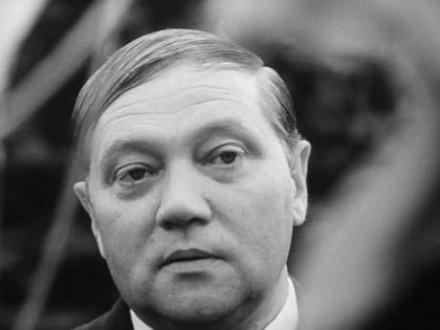John Bindon (John Dennis Bindon)

John Bindon was born in Fulham, London, and was the son of Dennis Bindon, a merchant seaman and engineer, turned cab driver. The second eldest in a working-class family of three children, Bindon went to St Mark’s Church School in Fulham where he became a noted rugby union junior, but left at the age of 15. He was given the nickname “Biffo” for starting or getting into fights. As a teenager, he served time in a borstal for possessing live ammunition. After jobs ranging from laying asphalt to dealing in antiques (his best friend for several years was the glamorous and now-infamous international antiques dealer John Hobbs) Bindon pursued a career in acting. Director Ken Loach, spotting him in a London pub in 1966, considered him perfect for the role of a rough husband in the film, Poor Cow (1967). His next big break came the following year with a role in Performance (not released until 1970) alongside Mick Jagger, where he played a violent mobster. His portrayal earned him critical praise and typecast him for future roles. In 1968, he met Vicki Hodge, a baronet’s daughter turned model and actress, who introduced him to British aristocracy. However, he had been previously invited to the Caribbean island resort of Mustique, where Bindon claimed to have had sex with Princess Margaret. The biographer of the Princess, Noel Botham, was also of the opinion that Bindon had an affair with her. During this time Bindon gained the nickname “Big John”, due to the reported size of his penis. He went back to Mustique for a second time in 1969 and took girlfriend Hodge with him. The princess later publicly denied meeting Bindon (despite pictures of them next to one another) and was reportedly unimpressed to hear stories of their sexual encounters in the press. Bindon’s name was also linked with a succession of models, including Christine Keeler, the former Playboy “Bunny Girl” Serena Williams, and also Angela Barnett, then girlfriend and future wife of pop star David Bowie.
Bindon was awarded the Queen’s Award for Bravery, a police bravery medal, for diving off Putney Bridge into the River Thames to rescue a drowning man, in 1968, although some said he had pushed the man in and only rescued him when a policeman appeared. Bindon had a violent temper and a natural intimidating personality, and he was accused of running a protection racket in west London, targeting pubs, restaurants and cafés. There were also suggestions of connections to the Richardson Gang and the Kray twins, who supported his control of west London, as well as rivalries with gangs from south London. The south London rivalries were suggested to have contributed to his bankruptcy, when he accrued drug debts. The extent of his involvement in the English underworld has never been reliably established. Bindon’s best known film roles were his appearance in Get Carter (1971) and The Who’s film Quadrophenia (1979) as a drug dealer. He also appeared in television series such as Public Eye, The Gold Robbers, Department S, Dixon of Dock Green, Z-Cars, Paul Temple, Special Branch, Softly, Softly: Taskforce and Hazell playing out his usual tough-guy roles. Despite a productive film and television career, Bindon felt he needed a break from acting, and went into organising security. It was to be a move which would have disastrous personal and financial consequences.
In early 1977, Bindon was hired by Peter Grant on advice from tour manager Richard Cole as security co-ordinator for the rock group Led Zeppelin during their concert tour of the United States. He had previously provided security for actors Ryan and Tatum O’Neal. Bindon took his job to the extreme, developing an addiction to cocaine and heroin during the tour and much violence occurred behind the scenes directed mostly at journalists, bouncers and concert staff. The band did not realise the extent of what was happening until their concert at the Oakland Coliseum on 23 July 1977, near the end of their US tour. Upon arrival at the stadium, it is alleged that Bindon pushed a member of promoter Bill Graham’s stage crew out of the way as the band entered via a backstage ramp. As a result, tension had been simmering between Graham’s staff and Led Zeppelin’s security team during the day, and as Grant and Bindon were walking down the ramp near the end of the concert, words were exchanged with stage crew chief Jim Downey, which resulted in Bindon knocking Downey out cold. Bindon maintained that he was goaded into the fight after Graham’s crew referred to him as “a weak limey fuck”. Just minutes later a separate off-stage incident occurred. Bill Graham’s security man Jim Matzorkis was accused of slapping Peter Grant’s 11-year-old son Warren for taking a dressing room sign, and the ensuing argument escalated into an all-out brawl. Led Zeppelin’s second Oakland show took place only after Bill Graham signed a letter of indemnification, absolving Led Zeppelin from responsibility for the previous night’s incident. However, Graham refused to honour the letter and assault charges were laid against Grant, Cole, Bindon and John Bonham when the band arrived back at their hotel. The four received bail and later pleaded no contest, receiving suspended sentences. Bindon was dismissed by the band and returned to England. Grant later said that allowing Bindon to be hired was the biggest mistake he ever made as manager.
In 1978, Bindon became involved in a fight with John Darke, a London gangster, outside the Ranelagh Yacht Club, in Fulham, London. Darke was stabbed nine times, resulting in his death, and Bindon managed to flee to Dublin with his own knife wounds covered up. He gave himself up to police and in the subsequent trial at the Old Bailey in October 1979. The prosecution claimed that this was a £10,000 contract killing over drugs, with the fight as a cover for the death. However, the defence argued that Darke’s death was in self-defence, saying Bindon was in fear of his life as he was being blackmailed about losing drug money and cocaine worth thousands of pounds (though his defence might have been hindered amid allegations of bragging to a cellmate that he was a hitman while on remand awaiting trial, referring to Darke as “an old man’s cunt”). Bindon was acquitted of Darke’s murder in November 1979. It was reported that the “substantial appearance” of actor Bob Hoskins as a character witness at the trial helped sway the jury’s verdict and that the judge Sir William Mars-Jones “had been sympathetic towards Bindon in his summing-up and unhappy with the ragbag of witnesses produced by the prosecution”. Media reports of the trial, along with the Oakland incident, seriously damaged Bindon’s reputation (there were other various allegations of a similar violent nature against Bindon) and he found it increasingly difficult to find work in the entertainment industry. This was partly attributable also to his reputation for being difficult to work with on set, as much as his alleged connections to organised crime.
During the 1980s, Bindon became a more reclusive figure, spending more of his time at his Belgravia flat. He died in London at the Chelsea and Westminster Hospital. His death appears to be the subject of some debate. Some sources (including the 2005 ITV Real Crime: Starring John Bindon documentary) say Bindon died from an AIDS-related illness, while others (including Wensley Clarkson’s biography (citing the now defunct UK newspaper Today) claim he was suffering from liver cancer. Bindon’s funeral was attended by more than 200 people, including his friend and neighbour Matthew Freud.
Born
- October, 04, 1943
- United Kingdom
- Fulham, London, England
Died
- October, 10, 1993
- United Kingdom
- Chelsea, London, England



